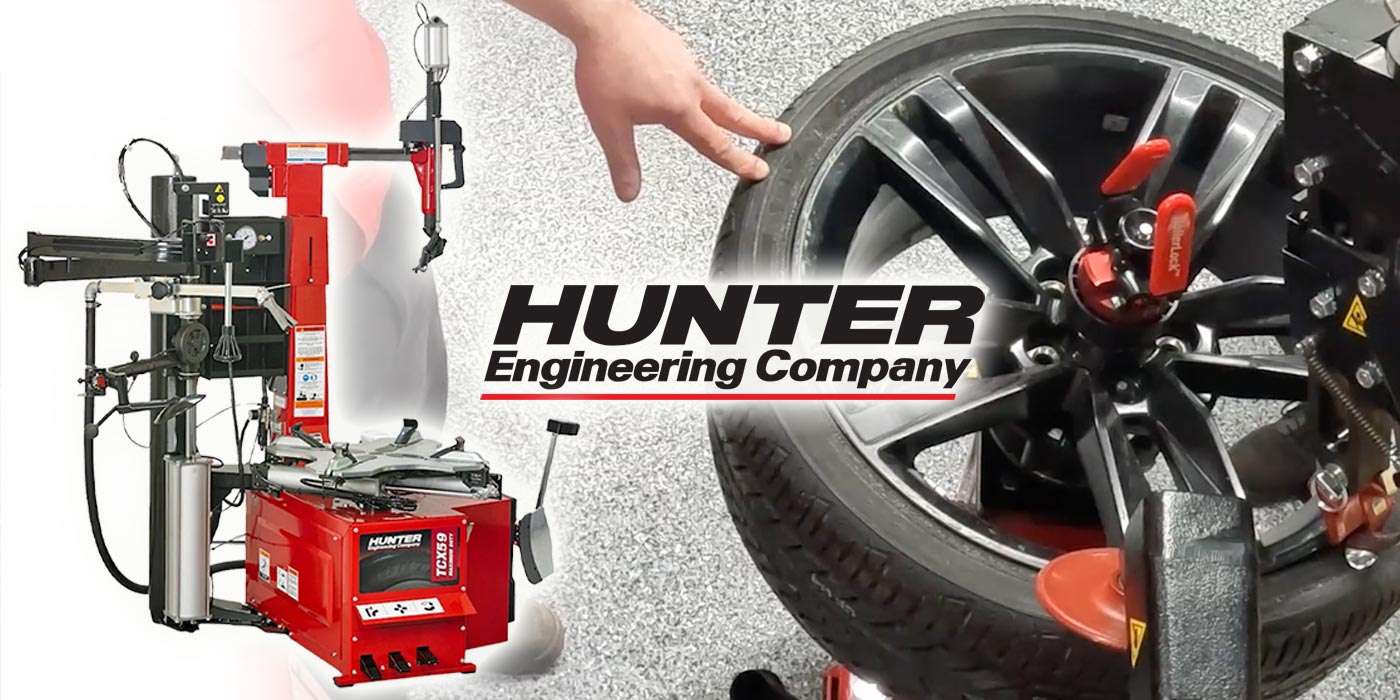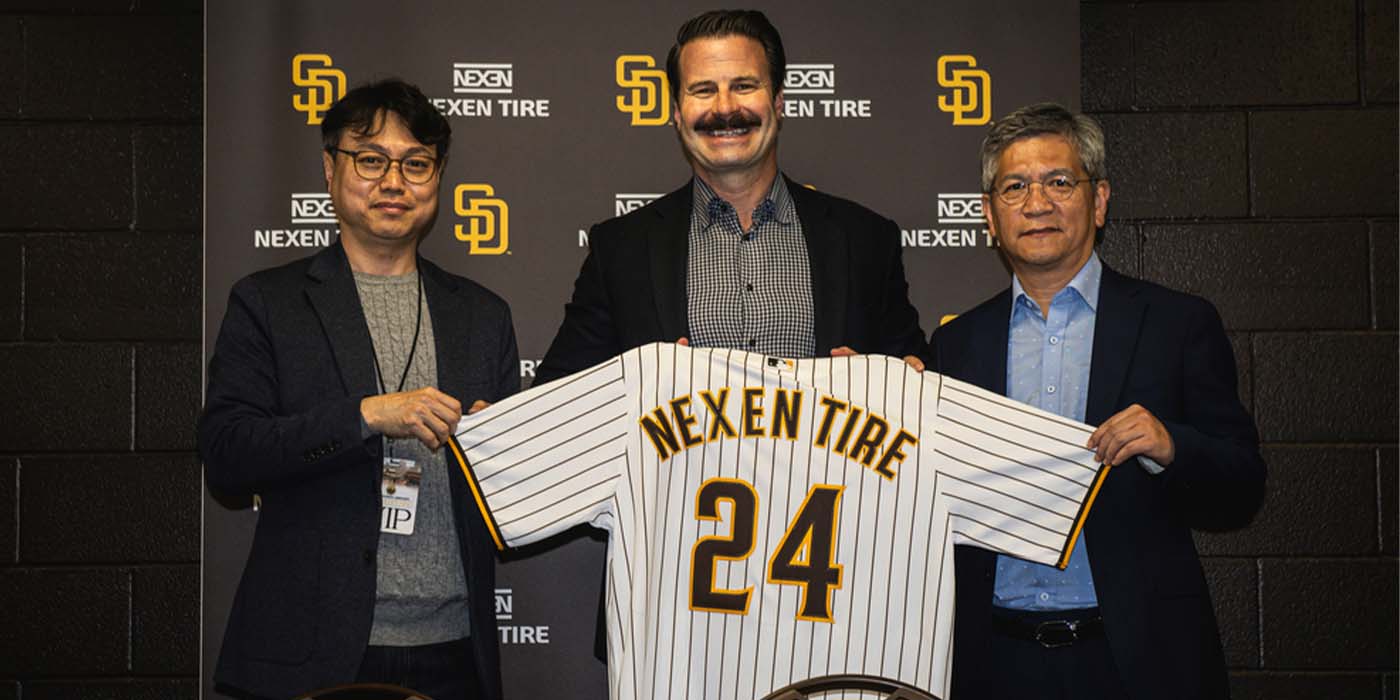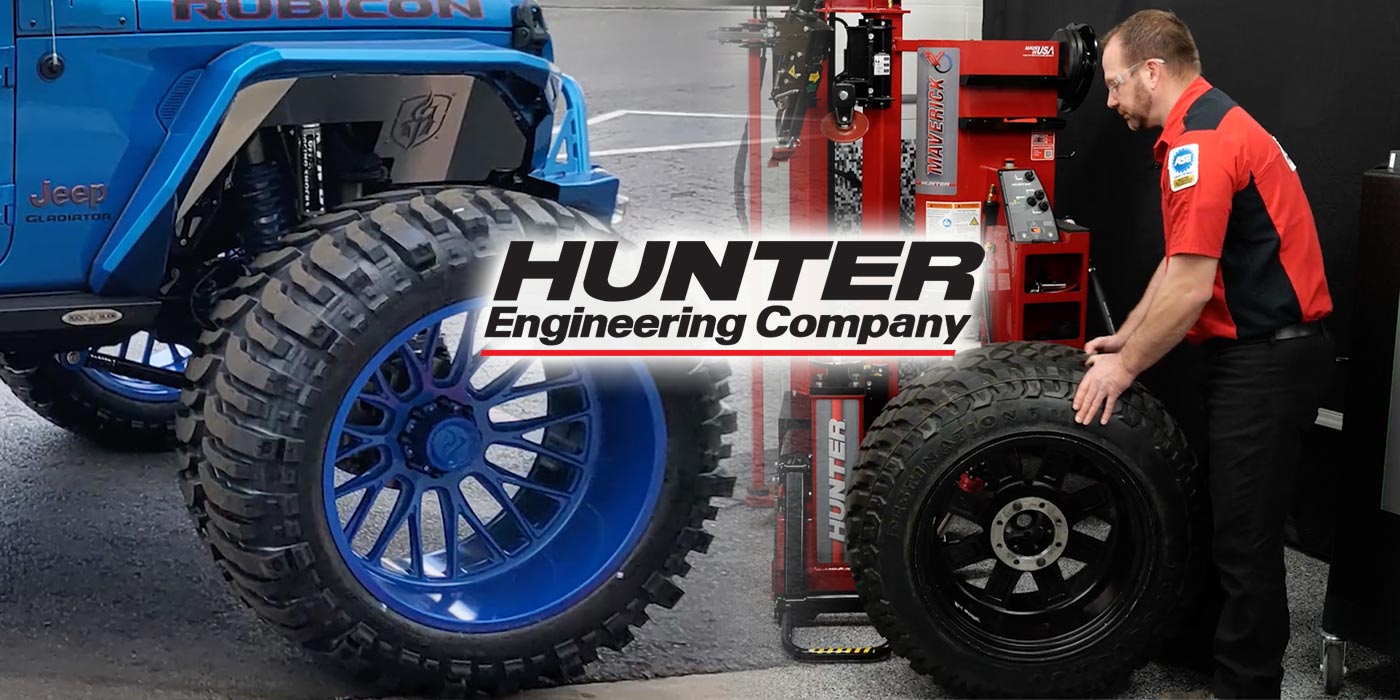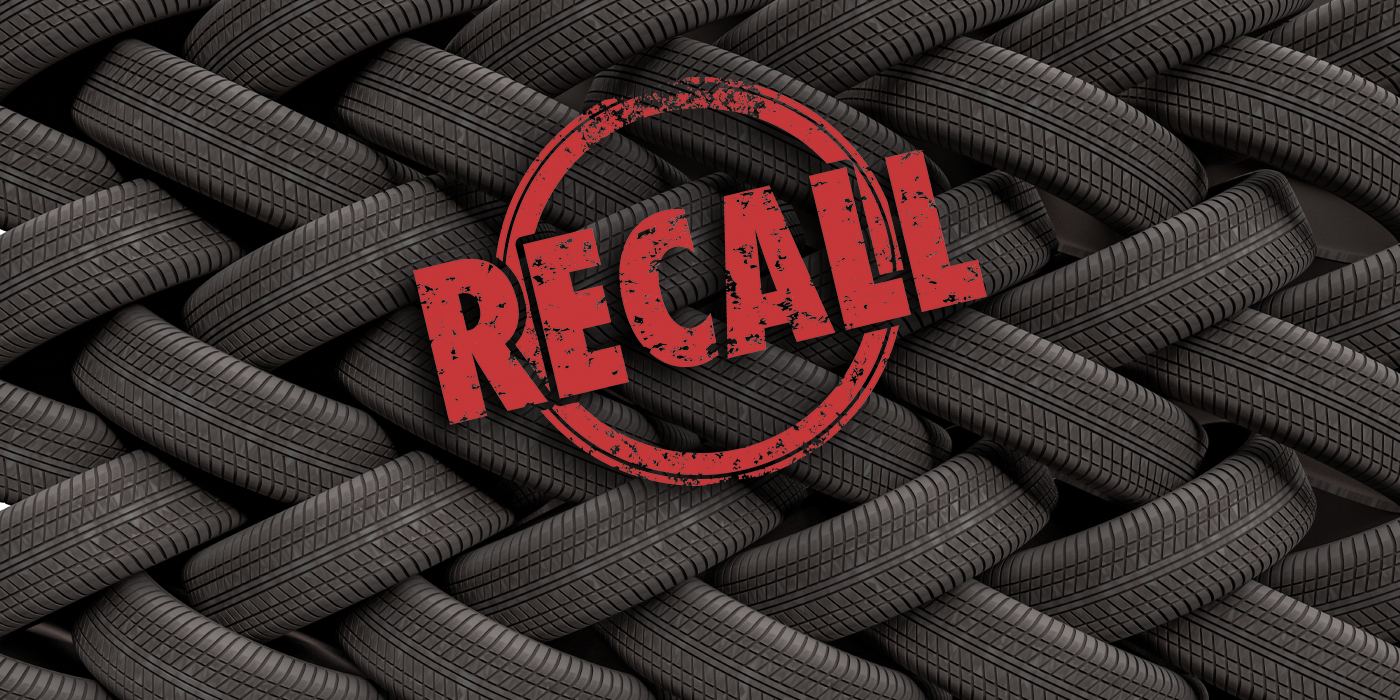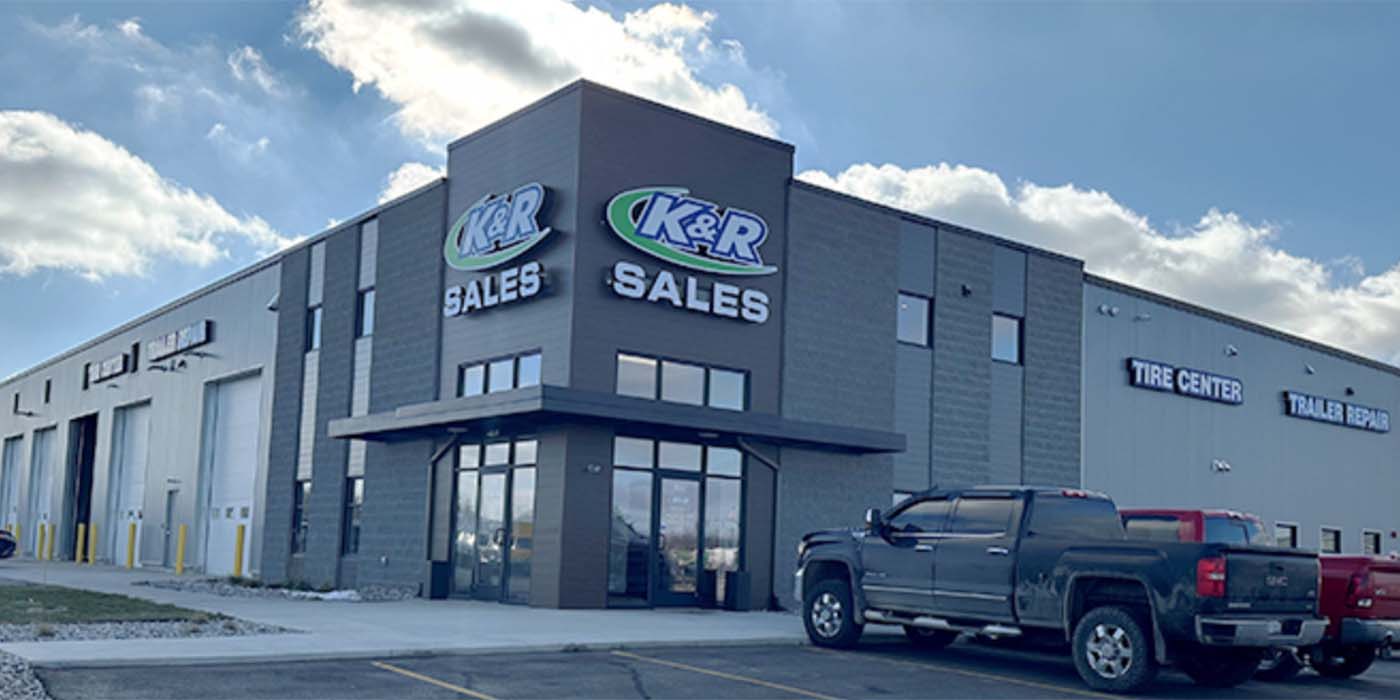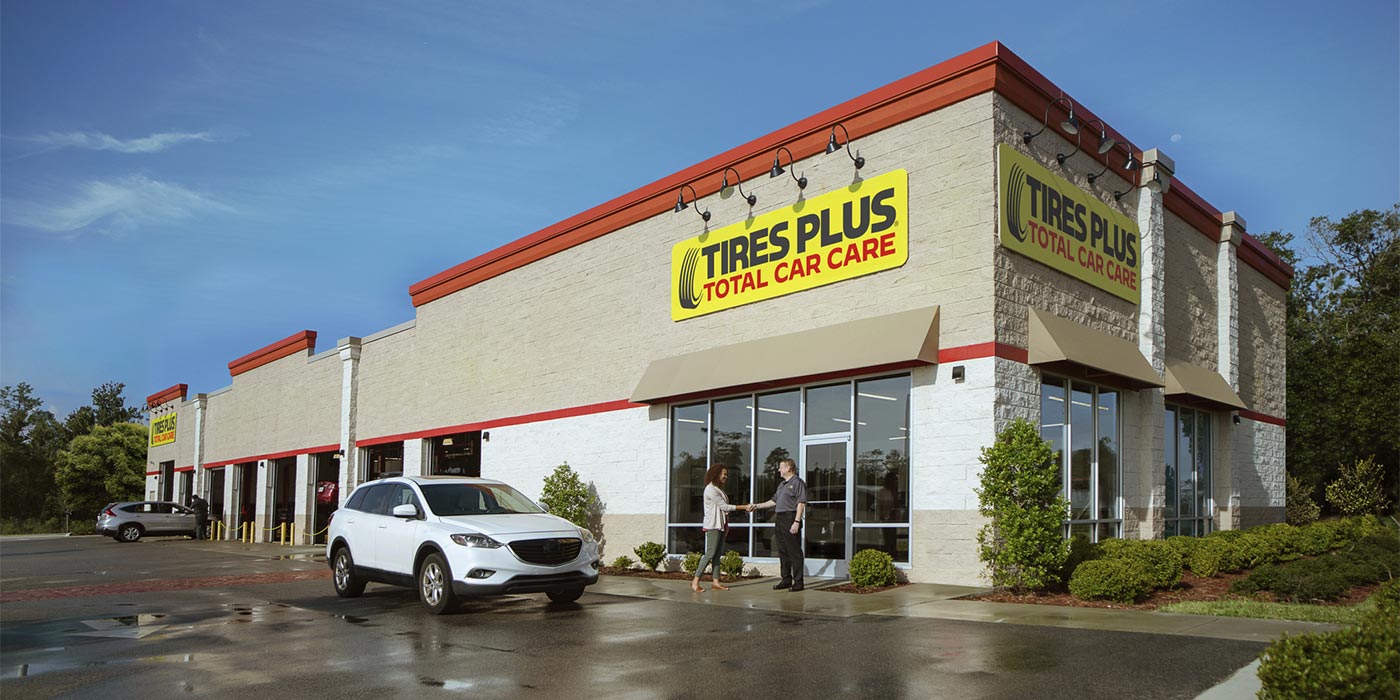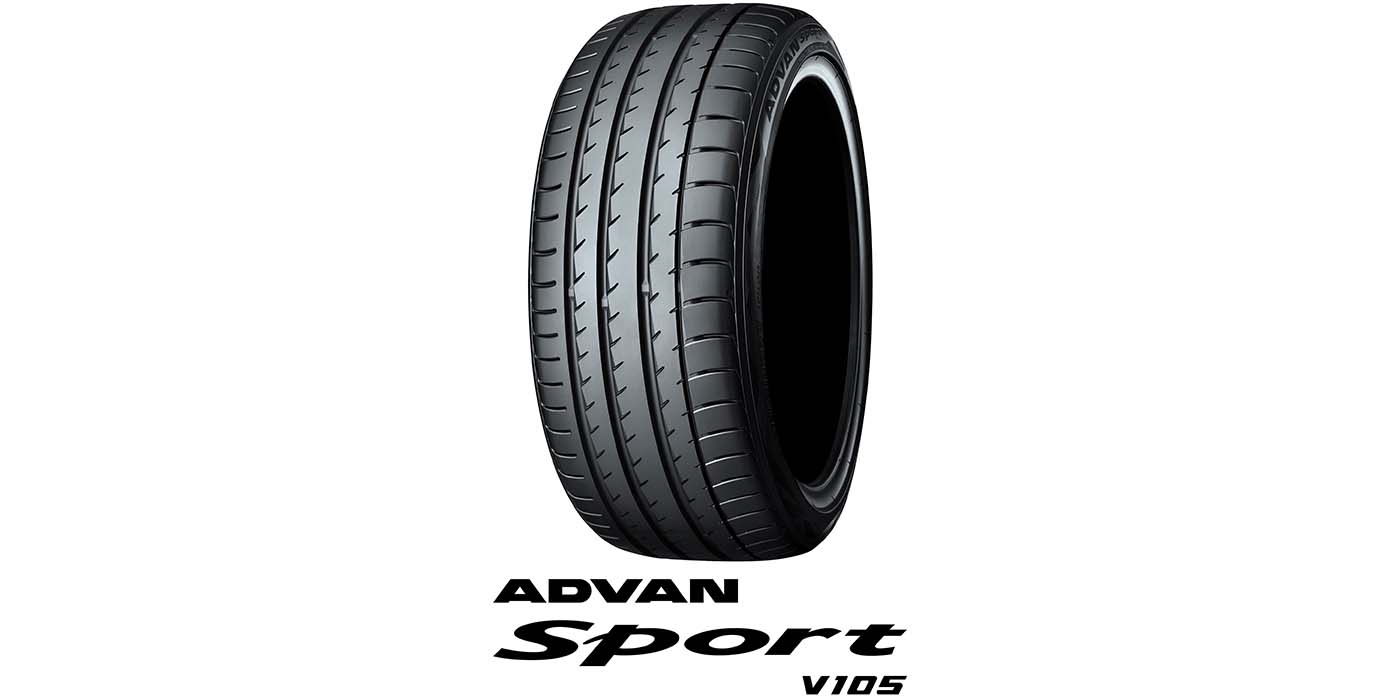 The Farmers Almanac is claiming to be 80% accurate. Yet the truth is, it’s only about half right or about the same as flipping a coin. Nevertheless, the Farmers Almanac has continued to sell over four million copies a year of its forecast. Imagine trying to sell off-the-road tires and claim they only perform to 80% of your promise, much less a 50% performance.
The Farmers Almanac is claiming to be 80% accurate. Yet the truth is, it’s only about half right or about the same as flipping a coin. Nevertheless, the Farmers Almanac has continued to sell over four million copies a year of its forecast. Imagine trying to sell off-the-road tires and claim they only perform to 80% of your promise, much less a 50% performance.
The point is I’ve come here today to make some guesses, based on a lot of different opinions and 25 years of working in the tire business. Here’s what we’ll take a look at. We’re going to take a look at the economic outlook for the U.S., Canada and Mexico during 2014. We’re going to have a guesstimate of the demand for off-the-road tires ahead in the Americas according to the collective industry they have. And finally, we’re going to take some really big guesses about any growth or declines that we might see in the construction, mining, port, original equipment, parental, government and market segments.
Here’s a quick look at the economic growth projections for the U.S., Canada, Mexico according to the IMF or the International Monetary Fund of 2014 forecast. The IMF predicts economic growth in the U.S. will be about 2.6% this year, up from 1.6% last year. A lot of this is likely to come from the growth in the housing recovery, even despite the mortgage rates that are due to increase because the Federal Reserve has decreased the economic stimulus bonds almost $10 billion this year from last. Nevertheless, new housing starts are predicted to be as much as 1.3 million this year over an estimated 950,000 last year.
Now, depending on who you’re willing to listen to, it’s estimated that every new housing start creates three to four and half new jobs. Now, if you look at 350,000 housing starts, that means it can add up to over a million jobs this year to the housing starts, to the employment for the housing starts, and this is good news for our business. Unfortunately, there are still a few wild cards that can play a role in the housing starts this year…and it could impact the prediction downwards a half a percent or more.
Those wild cards include things as natural gas price increases, continual federal borrowing stalemates in both houses, like we don’t know about that, a sudden rise in the unemployment, and any Middle Eastern conflicts that would constrain petroleum, causing spiking gas and diesel prices at the higher levels.
That’s a look at the U.S. Let’s take a quick look at Canada. On the chart, you’ll see the IMF predicts the Canada economy to grow about 2.3%, very similar to the U.S. That’s this year over last year, due to change in net exports and the impact of the U.S. economy on Canada and vice versa. The average disposal income in Canada is expected to remain somewhat flat, and that’s basically due to disposable income being down in the households, and that dampens the growth, the consumption growth itself. The bottom line is that the economic growth in Canada, just as in the U.S. this year, will be up, but it’ll be minimal.
You know, Mexico last year saw an unexpected economic slow-down during 2013 due to lower government spending and from the U.S., sluggish US economy, according to the IMF. However, this year the economic growth in Mexico is predicted to be 3% over last year, as Mexican manufacturing responds to the slight recovery in the U.S. demand and as government spending regains traction due to the ongoing structural reforms. As you can see, the projected GDP growth for the U.S., Canada and Mexico will likely remain in first gear this year, moving slowly but moving forward nonetheless.
Before we take a look at predictions for various OTR market segments, the construction, mining, port, OE, we’re going to look at, let me show you some quick industry data and forecast for off-the-road tires in America. I will give you what I think is an interesting glance into what’s happening in the OTR from that data.
The industry estimates domestic OE and replacement radial and bias tire sales. For our purposes, this includes civilian units for OE and replacement, off-road tires manufactured by major players in the industry, and somewhat of a guesstimate of all the others. We are looking at bias and radial units in wheel diameters. Remember this is in wheel diameters, noted on the screen.
Since we don’t have a lot of time, let’s focus on just OTR replacement for a moment. Here’s something that you might find interesting. Out of all 24 replacement sizes you see on the screen, six of them, 24-inch bias and radial, 25-inch bias and radial, 49-inch radial and larger than 59-inch radial represents 80.42% of all replacement unites sold during 2013. Now, roughly 65% of these units are radial, and 34% of them are bias. So, about 25% of the OTR rim size categories classified and tracked represent about 80% of all OTR units sold in America.
Now, that was 2013 overall. But what about where these tires are sold? Let’s take a look. The top five states in 2013 for OTR tire sales in America were Texas, Arizona, Florida, California, West Virginia, in that order. These five states represent 32.1% of all OTR units sold. Now let’s add five more states to the picture: Pennsylvania, Nevada, Kentucky, Ohio and Wyoming. We jump to 48.7% of all OTR units sold. Now, if we add 10 more states, making a total of 20 states, it’s 71% of all OTR markets covered.
So, what do the numbers tell us about where we’ve been and what growth might be ahead? Looking back to 2010, you can see that the overall OTR unit growth between 2010 and 2011 was almost 13%. Unfortunately, overall unit growth declined between 2011 and 2012 by just about the same number – 13%, basically wiping out all the gains realized in 2011. Last year, we know about last year, don’t we? In 2013, unit sales were down by almost 21%. That’s an incredible growth then decline swing of almost 34% in just three years. We kind of call that peaks and valleys, don’t we? These declines were likely driven by both global and U.S. economic conditions, especially in housing construction, as well as the obvious growth in the OTR supply, and the aggressive low penetration strategies of OTR manufacturers from China, India and elsewhere.
Overall, total OTR growth in the U.S. is expected to be marginal this year at 4.3% and then declining to around 1.5% in 2017. Radial OTR growth in the U.S. is expected to be about 5.6% this year and then decline over the next three years to approximately 1.6% in 2017. You can see this by the red horizontal line on the screen. Here you also see a blue horizontal line that represents bias OTR. This is the bias growth or lack of growth in the U.S. and is expected to be significantly lower than radial, this year at about 1.8% and basically remain flat through 2017. OTR radialization continues within our industry, especially at Yokohama. Radial share of the OTR tire market in 2013 was approximately 67.86%. Radial share of the OTR market will likely remain around 69% through 2017. That’s two radials for every bias sold will likely be the overall mix for some time. No matter how you look at the number, the overall OTR market unit growth will be virtually flat. That means more competition for all of us.
Now, let’s look at what might happen in those various markets that we deal in. Let’s start with construction. The Dodge outlook report predicts a rise in construction starts for housing, commercial and manufacturing building sectors. The 2014 outlook report predicts the total construction starts for 2014 will rise by 9% to $555.3 billion versus we have a 5% increase in 2013 and $508 billion. That was over 2012.
Let’s take a look at where this growth within the construction market is likely to come from. Single-family housing is predicted to grow by 26% or more than 785,000 units this year. That’s a lot of construction equipment and tires. That’s good news. Multi-family housing is forecasted to rise by 11%. Commercial building construction is predicted to increase by 17% over 2013, with warehouses and hotels leading the way. We should see some positive increases also in the retail store and office building construction. Institutional buildings, such as hospitals, colleges, school-related construction will likely rise by less than 2% after a five-year decline. It’s not much growth, but it’s better than before.
Public works construction, unfortunately, some areas of construction are expected to go down a little and public works is one of those, especially highway and bridge projects. They’re predicted to drop 5% this year after a 3% gain in 2013. This is occurring due to the widespread deficits in the federal, state and municipal governments. Even worse, electric utility construction is expected to decline by as much as 33% from last year and 55% less than its 2012 high. This doesn’t necessarily make a lot of sense, and I’m not sure about this prediction, simply because the number of shuttered coal electric plants and the need for new transmission line infrastructure across America. Overall, 2014 for construction, I think, is going to be a good year.
Now let’s take a look at mining. Mining is a little bit like the airlines. You’ve got very high capital costs to buy equipment, whether you’re opening a new mine, whether you’re expanding, whether you’re improving productivity. This applies whether it’s an open pit mine, an underground mine, or even a quarry or gravel operation. And like the airlines, when prices drop for whatever reason, you simply park the equipment, reduce employment, adjust capacity. You stop giving out pretzels and peanuts and weather the storm, focusing on marginal costs, keeping your head low until demand and supply lead to an increased price.
Let’s start with coal. What happens with coal, especially as a primary fuel for electrical energy generation? We all know that significantly affects the OTR industry. Obviously, the difference between the average cost for BTU for natural gas versus coal delivered in the U.S. electric power plants has narrowed in recent years, as you can see from the chart on the screen. However, the projected cost of natural gas as a fuel source for electrical energy generation is expected to rise over the next 36 years, according to the United States Energy Information Administration or the EIA. The projected difference between natural gas and coal costs per kilowatt by 2040 is almost 41% in favor of coal.
We already know that the electric utility construction is forecasted to be down 33% this year over last. Additionally, coal production for electric utilities will continue to face serious obstacles, such as gas exhaust authorization, scrubbers, dry sorbent injection systems. These are all required by 2016 and these regulatory upgrades are causing many coal-fueled power plants to close across the U.S. The energy chart you see on the screen clearly indicates that coal will likely be a primary source for energy production in the U.S. through 2040. As you can see on the coal area, the projected forecast will continue to have about 18% share of the U.S. energy requirements for decades to come, and that is good news. That’s the long term.
The EIA projects a 36-million short tons increase in coal production this year over last to about 1.04 billion tons. That’s almost a 3.6% increase over 2013 and better news for the OTR. The areas that will most likely be affected are the Powder River Basin in Wyoming and Montana, which produces almost 40% of all U.S. coal. Western coal production is expected to grow by about 24 million tons, and the Appalachian region coal by 3.5 million tons. Obviously, there are many forces acting on the future of coal. There are basically five forces we need to think about. Of course, the regulatory forces, the cost of operational deficiencies, the rate of electrical utility plant construction, the average use of electricity per capita, and of course, the weather. My prediction for coal is simple, more competition than ever in the OTR industry for all of us making or selling tires in this segment.
Let’s move forward and take a look at a few metal commodity predictions for a moment. First we’re going to start with aluminum. The outlook for aluminum is good, according to GE Capital. Year over year increases of 6% could occur this year due to growth in construction and transportation, especially as more and more automobiles are being produced with aluminum box to meet more stringent federal fuel economy requirements and a growing consumer preference for higher mileage vehicles.
Copper demand rebounded some last year and is expected to grow slightly, 4% to 5%, this year. However, pricing could slip due to a glut in copper in areas like South America and Chile. Copper saw a 400% increase between 2003 and 2008. Some analysts are predicting falling prices due to oversupply, at least through 2015 and 2016. Naturally, this could affect marginal profits of copper mines creating more downward price pressures on OTR tires and, of course, lower demand.
Both Australia and Brazil forecast year over year growth in iron ore exports to 22.1% and 9.1% respectively as projects by Rio Tinto, Fortescue, BHP, and Vale come on line. However, a number of analysts believe that the slowing growth in China and opening of the new mines in Australia will soften iron ore prices for the rest of the world. RBC Capital Markets has predicted iron ore prices will drop from the current price of $136 per ton, that was 2013’s price, to around $121 per ton this year. I guess we’re just going to have to wait and see.
Nickel demand is expected to grow 5% to 6% annually through 2015. The stainless steel and aviation segments propel this growth. Personally, I think it could be more if Indonesia continues to ban its exports for nickel and its inventories decline. By the way, I don’t know if you know, but Indonesia produces 1/5 of the world’s nickel ore.
Zinc and lead – growth of these metals could improve as years of oversupply and industrial demand in developed markets recover. I expect the price of zinc to rise because there’s not any new mines being opened and there’s actually five to six big zinc mines that are expected to close by 2015 which could decrease global supply by as much as 10%. Lead production is expected to rise by 4.2% this year according to BNamericas.
South Africa, China, and Europe will drive the price of platinum this year. After declines last year from the weakness in gold, according to the International Business Times, the only bright spot that I see is the recovering auto market in the U.S. and as the European emission standards drive a lot of new catalytic converter production. South Africa produces two-thirds of the world’s platinum, but until the price rises above $1,700 per ounce or more, these mines will continue to struggle.
Now, probably when we talk about mining, the biggest question that most people have is what’s going to happen with gold. Will it bounce back in 2014? 2013 was a disastrous year for gold mining. Gold values declined almost 25%. That’s amazing, but it also went up pretty quick. What goes up must come down, is that what they say?
Much of this decline in gold speculation is likely due to the U.S. Federal Reserve scale back of its $85 billion a month stimulus package and then a huge gold sell-out by Cyprus last year to finance its 400 million euro bail out. Historically, gold speculation goes hand in hand with hedges against inflation. Since 2008, the Federal Reserve has pumped $4 trillion into the U.S. economy in stimulus to keep interest rates low and prevent the country from falling back into recession. So, what’s going to happen in 2014? Well, Bank of America has slashed its gold price forecast by 11% and silver price prediction by 21%. I believe you can expect gold mining operations to scale back in order to adjust to these predictions, which is naturally going to lower the demand for OTR tires in both gold and silver mining segments.
Now, here’s a few observations about petroleum. I know some of you do significant business in the petroleum segment, so here’s an oil forecast. The International Energy Agency or the IEA predicts 2014 oil demand will be higher than originally forecasted due to some promising signs of U.S. economic rebound. The IEA is forecasting a minimal growth of 1.3% this year global. Not much to write home about, but as with coal, oil production and price predictions are also a wild card based on continued instability in the Middle East. If one significant conflict arises this year, the weather forecast for petroleum will change. Having said that, there remains continued optimism in the oil sands growth, in spite of regulatory delays in projects like the Keystone XL pipeline. Nonetheless, I predict more giant radial competition from a variety of new players in the oil sands.
Now let’s take a look at the U.S. port industry. According to the American Association of Port Authorities, the United States is served by some 360 commercial ports providing some 3,200 cargo- and passenger-handling facilities. Probably the best way to sum up the port business is that the maritime port terminal demand is driven by cargo demand, and cargo demand depends on economic strength of our economy, especially trade demand from business and household goods.
For many decades container trade has been the fastest growing market segment of the maritime transportation, accounting for over 16% of the global seaborne trade by volume in 2012 and more than 50% of that volume’s value. 2014 is expected to be a record container year for U.S. ports, according to the Journal of Commerce, and that’s good news for those selling OTR tires into that business.
According to the Drewry Maritime Advisor, world container port demand will increase an average of 5.8% per year worldwide and more than 4% per year here in the U.S. until 2017. As I said, the container port business is driven by consumerism. As you can see from the chart on the screen, most of these increases will be derived from the BRIC nations through 2020. Bottom line, I expect growth in both port and waterway segments to be incremental, with the exception U.S. port upgrade, pending completion of the Panama Canal expansion project in 2015.
Let’s look at OE equipment segment of the OTR business. As most of you already know, many heavy equipment industry leaders have already adjusted their forecasts for 2014. According to Bloomberg, during October of last year, Caterpillar has adjusted its quarterly report for 2014, due to lower orders and uncertainties over global economic growth. Komatsu changed their fiscal projection for their year ending March 21, 2014, downward, and even after a 17% jump in fourth quarter profits in 2013, John Deere CEO sees equipment sales falling slightly this year. Terex sold their truck business to Volvo in December of 2012 to focus on the material handlers, port solutions, cranes, and construction segments. They, obviously, see robust opportunities for the construction segments. Whether it’s a Cat or Terex, I believe most OEMs are now squarely focused on rationalizing all costs. Bottom line, the leading OEMs are moving quickly to taking guessing and costs out of their business models.
The rental segment of our industry continues to grow as contractors look for ways to improve their balance sheets. In fact, the American Rental Association predicts the equipment rental business for North America will grow by 8% this year to $41 billion. The construction tool segment of the rental industry is expected to grow by 7.8 % in 2013 and 2017.
Let’s switch gears. Let’s talk about the government segment. This is some interesting information. I didn’t know about this. I’m going to read it fast and furious, but it’s really great. According to the U.S. Transportation Administration, in 2012 there were roughly 4 million centerline miles of public roadways, 47,000 miles of interstate highways in the U.S. There are more than 600,000 bridges, 138,000 miles of freight and railroad track, more that 13,000 civil and joint used airports, almost 30,000 miles of inland and intercoastal commercial waterways, and more than 12,000 miles of subway and urban commuter rail track in the United States – 90% of it is owned by federal, state, and local governments.
In 2011 the nation’s transportation infrastructure was valued at over $4 trillion. That’s a lot of infrastructure. In fact, the U.S. Department of Transportation has identified more than 200 major traffic bottlenecks across the nation. In February of last year, I moved to California. Guess where I live? I live on one of those 200 major bottlenecks, and they’re not fun. The Federal Highway Administration’s national bridge inventory has shown over 200,000 bridges in America need work, major rehabilitation, widening or replacing them now. Think about that every time you drive across a bridge.
Most of our infrastructure needs repair, improvement or replacement. Yet without changes to our current government policies, the revenues raised by all levels of governments for roadway infrastructure maintenance, building or rebuilding is only about $67 billion of the more than $200 billion the U.S. Department of Transportation believes is necessary to just maintain and improve the nation’s highways and transit systems.
Another way to look at this is that the estimated gap between federal revenues for transportation and the needs for our infrastructure will be over $400 billion just between 2011 and 2015. The sad fact is the total combined highway and transit spending as a share of GDP in the U.S. has fallen 25% to 1.5% of the GDP since the Federal Highway Trust Fund was established in 1956. So, what can we expect this year from the federal, state, and municipal government segment? According to the American Road and Transportation Builders Association, or ARTBA, 2013 showed a modest 3% increase in government related transportation spending, from $127 billion to $130 billion.
ARTBA predicts some growth in highway and street pavement in about 19 states, private work for driveways and parking lots, airport terminal runway work, railroads, port and waterway construction. About half of the funding for bridge and tunnel work will come from eight states: California, Florida, Illinois, New Jersey, New York, Pennsylvania, Texas and Washington. ARTBA also predicts a general rebound in bridge and tunnel construction growth during 2014.
As I mentioned before, ports and waterways driven by increased trade expected after completion of the Panama Canal expansion project in 2015 should increase growth in the construction market serving that segment. We can expect slight growth in airport runway and terminal construction for the next five years, due to the growth in airline passenger miles. In the airport runway and terminal construction sectors, ARTBA predicts some promising growth in funding projects for Alaska, Arizona, California, Florida, Illinois, New York, Ohio, Tennessee and Texas.
Overall, the forecast for government spending in the transportation infrastructure appears to be cool with intermittent warming with two exceptions. The restructuring of the 2012 MAP-21 law offers state transportation departments more flexibility in their use of federal funds, which might lead to increasing highway and bridge pavement work, and the expanded Federal Transportation Infrastructure Finance and Innovation Act loan program should stimulate some construction activity in some states. So that’s it, a fast and furious overview of some guesses for what could be ahead this year and beyond in the OTR tire industry for the Americas.
Let me leave you with one final prediction. The future survival and success in OTR won’t be about communicating value, such as price, features, advantages and benefits of a product, like we’ve always been taught to sell in the past. That’s all become table settings. It’s pretty much available for anyone who has an internet connection.
That sales model, whether any one of us likes it or not, is coming to an end. Instead, it’s going to be about who can consistently demonstrate the most relevant value creation, one customer at a time, one day after another. The future of OTR isn’t going to be easy but it’s certainly going to be a lot smarter. Leadership in this industry won’t be about being big. It will be about getting smarter and about being a smarter choice. It will be about wisely choosing and committing to the right parts, not just the right price on any given day, and all of this will be driven by smarter end users demanding a smarter and more predictable total ownership experience and value in every off-the-road tire they purchase and from every person they purchase them from. So, how do you become a smarter choice for the end user? You can’t get smarter by guessing, and that’s my final prediction. Future success in OTR won’t be about guessing anything.






